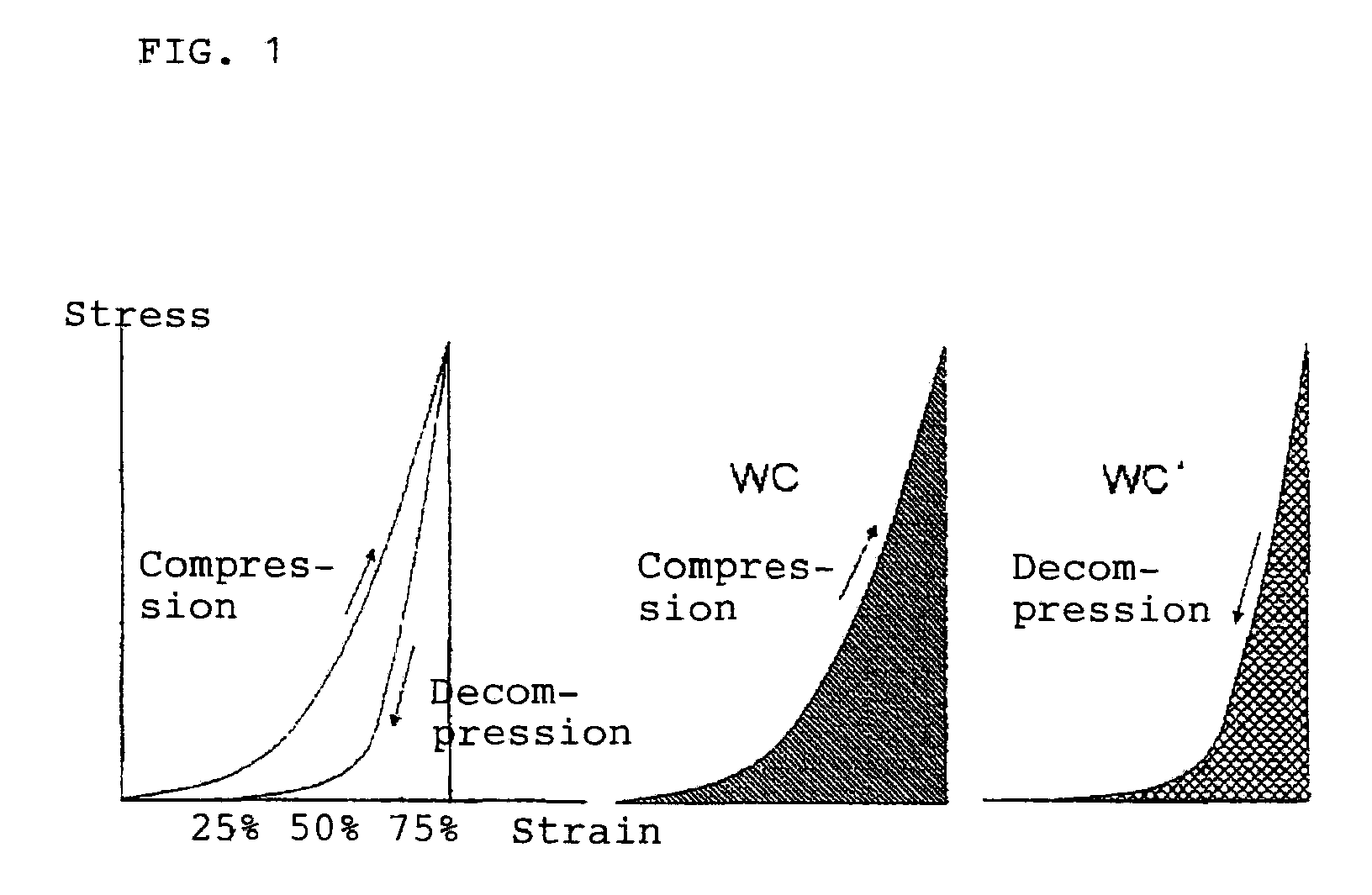Elastic network structure
a network structure and elastic technology, applied in the field of elastic network structure, can solve the problems of high cost of elimination of poisonous gas, inconvenient use, and inability to meet the needs of use, and achieve the effects of excellent light resistance, low restriction in handling or usage, and excellent chemical resistan
- Summary
- Abstract
- Description
- Claims
- Application Information
AI Technical Summary
Benefits of technology
Problems solved by technology
Method used
Image
Examples
example
Example 1
[0072]Using a metallocene compound as a catalyst, hexane, hexene, and ethylene were polymerized by a publicly known method. The obtained ethylene-α-olefin copolymer (specific gravity 0.919) was melted. The molten copolymer raw material was discharged in an amount of 0.7 g / min per single hole through orifices, each having a hole size of 0.5 mm, disposed at a pitch between holes of 5 mm in an nozzle surface area of 50 cm in width, and 5 cm in length. Cooling water was arranged at a position 250 cm under the nozzle face. Endless nets made from stainless steel having a width of 60 cm were disposed parallel in an interval of 50 mm to form a pair of take-up conveyors, partially exposed over a water surface. The copolymer raw material extruded was taken up on this conveyor, while being welded on the contacted parts, and sandwiched from both sides. The sandwiched material was introduced into water at 25° C. with a speed of 1.0 m / min. to be solidified, and then cut into a predetermi...
example 2 to example 6
[0073]Except having changed the amount of discharge through single hole, the take-up speed, the pitch between holes, the distance between nozzle face and cooling water, and the gap between endless nets as illustrated in Table 2, processes were performed in the same manner as in Example 1 to obtain network structures having the physical properties in Table 1.
PUM
| Property | Measurement | Unit |
|---|---|---|
| specific gravity | aaaaa | aaaaa |
| specific gravity | aaaaa | aaaaa |
| density | aaaaa | aaaaa |
Abstract
Description
Claims
Application Information
 Login to View More
Login to View More - R&D
- Intellectual Property
- Life Sciences
- Materials
- Tech Scout
- Unparalleled Data Quality
- Higher Quality Content
- 60% Fewer Hallucinations
Browse by: Latest US Patents, China's latest patents, Technical Efficacy Thesaurus, Application Domain, Technology Topic, Popular Technical Reports.
© 2025 PatSnap. All rights reserved.Legal|Privacy policy|Modern Slavery Act Transparency Statement|Sitemap|About US| Contact US: help@patsnap.com

